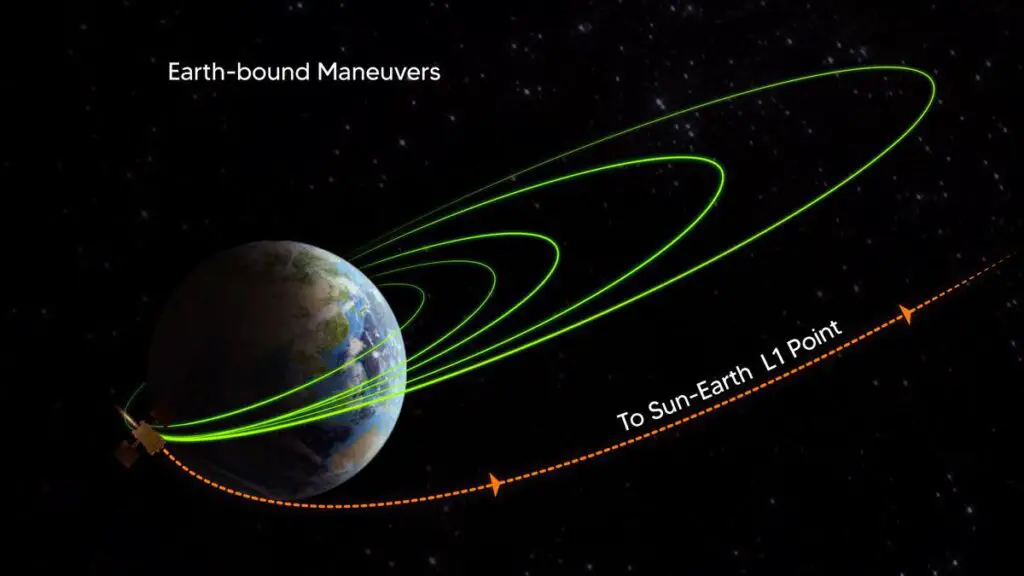India’s first space-based observatory, Aditya-L1, is being sent to the Lagrangian 1 (L1) point after a successful manoeuvre by ISRO on September 19. The TL1I manoeuvre marks the beginning of the spacecraft’s 110-day journey towards the L1 point, located between the Sun and the Earth. L1 is approximately 1.5 million km from Earth, which is about 1% of the distance between the Earth and the Sun.
ISRO posted on social media, expressing their excitement about the successful TL1I manoeuvre and revealing that this is the fifth time they have transferred an object toward another celestial body or location in space.
Aditya-L1 was launched on September 2 by the Polar Satellite Launch Vehicle (PSLV) from the Satish Dhawan Space Centre in Sriharikota. The mission of Aditya-L1 is dedicated to studying the Sun and it carries seven payloads, five of which were developed by ISRO and two by Indian academic institutes working in collaboration with the space agency.
Once Aditya-L1 reaches the L1 point in January 2024, another manoeuvre will be performed to bind the spacecraft to an orbit around L1. From there, the satellite will spend its mission life in an irregularly shaped orbit, roughly perpendicular to the line connecting the Earth and the Sun.
The mission life of Aditya-L1 is expected to be five years, during which its payloads will provide crucial information about various phenomena related to the Sun. These include understanding coronal heating, coronal mass ejections, pre-flare and flare activities, dynamics of space weather, and the propagation of particles and fields.
ISRO announced on September 18 that the Supra Thermal and Energetic Particle Spectrometer (STEPS) instrument, a part of the Aditya Solar Wind Particle EXperiment (ASPEX) payload, has already begun collecting scientific data. STEPS consists of six sensors, each observing in different directions and measuring supra-thermal and energetic ions as well as electrons. This data will help scientists analyze the behavior of particles surrounding the Earth, especially in the presence of the Earth’s magnetic field.
STEPS was activated on September 10, 2023, at a distance greater than 50,000 km from Earth, well beyond the Earth’s radiation belt region. After conducting the necessary instrument health checks, data collection continued as the spacecraft moved farther away from Earth. ISRO confirmed that each unit of STEPS is operating normally.
The data collected by STEPS will persist during the cruise phase of the Aditya-L1 mission as it progresses towards the Sun-Earth L1 point and will continue once the spacecraft is positioned in its intended orbit around L1. The information collected around L1 will provide insights into the origin, acceleration, and anisotropy of solar wind and space weather phenomena.
STEPS was developed by the Physical Research Laboratory (PRL) with support from the Space Application Centre (SAC) in Ahmedabad.

